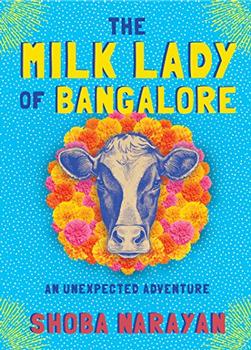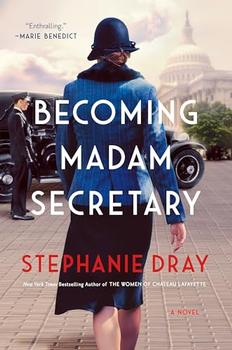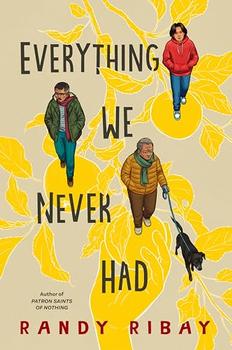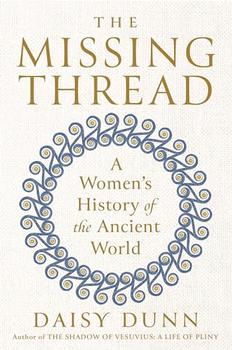Write your own review!
Judith G. (Ewa Beach, HI)
History with a smile
Interesting combination of historical information re: cows in India, interspersed with laugh-out-loud moments. You will fall in love with an enormous variety of cows, the Milk Lady herself, and the author. I want to order it for friends when it is published in January. Truly a GOOD READ.
Kenan R. (Liberty, MO)
Who Knew?
I was initially a little disappointed to discover the book I had selected was not a novel. That did not last long. Populated with true "characters" and a wealth of cultural and dairy information I was hooked almost immediately. The book is ostensibly about cows and their place in Hindu culture, but it's really about unexpected friendships and the things that matter to us as we get older. It turns out you CAN go home again, and it can feed and enrich your life tenfold if you let it. Great read!
 Beverly D. (Palm Harbor, FL)
COWS !!! Who knew???
Beverly D. (Palm Harbor, FL)
COWS !!! Who knew???
What a delightful and "unexpected adventure". The author's return home after years in NYC offer a perfect opportunity to educate both her daughters, AND us on some of the more interesting customs and beliefs of the Hindu religion specifically and India in general. Cows are an integral part of everyday life and we learn why through Narayan's friendship with the milk lady, Sarala. Their daily interactions give an insight into the give and take that makes India...India. Highly recommended.
 Lee M. (Creve Coeur, MO)
Do Cows Smile
Lee M. (Creve Coeur, MO)
Do Cows Smile
The price of milk, the price of cows, the price of friendship, all are superbly explored in this book. Some basis in fact, I believe, the narrative is enlivened by Ms. Nayaran's mischievous sense of humor. Her research regarding the customs and traditions about cows, languages, and other 'only in India' information is a great plus. I thought the first half of the book could have been tightened a bit so more of a 4.5 instead of a solid 5. Heartily recommend.
Nicole S. (St. Paul, MN)
I'm not quite sure how I feel about the book
Part of me really enjoyed the book. It opens to a world that I have no knowledge of and it also is through an adept guide's eyes. The problem is that the story just did not completely capture me. It feels like the author is unsure of so much, concepts of home, complicity in an uneven economic (and therefore relationship) situation, and her place in the world. She touches on her discomfort but doesn't really dive in. She also stops her narrative to add professorial information about her subject matter. It's both interesting and also disruptive to the story. Still, I learned quite a bit about a lot of topics and felt v. ready to read more about India.
 Viqui G. (State College, PA)
Cows and Milk of India
Viqui G. (State College, PA)
Cows and Milk of India
In this intriguing book, Shoba Narayan introduces to the reader her love of her homeland of India and especially the cows of India. The relationship at the core of the book is between the author and Sarala, the "Milk Lady of Bangalore". Sarala sells her milk on a street corner near the author's apartment. Through this friendship, we learn abundant details about different types of cows, their unique milk flavor and consistency as well as the reverence that the Indian people have for everything bovine (including cow urine and dung). Although this book was entertaining to read, the stark (and sometimes shocking) cultural contrasts between India and the US were my most memorable impressions.
Claire M. (Sarasota, FL)
The Sacred Cow
Upon returning home to India after 20 years in New York, Brahmin Shoba Narayan is greeted in her new building by a neighbor and a cow this woman is bringing in the elevator for the housewarming benediction of her new home. Narayan is nonplussed but then considers, on the advice of the man moving her family in, having the cow bless her apartment as well. And so begins the story of returning to Bangalore and the relationship Narayan forms with Sarala, the milk woman and her cows. Through this friendship and the need to understand the Hindu customs and cow-centric culture to which Narayan was unaware in her former Indian life she unearths lore, science, custom, and loads of facts and myths about the animal. Reverence is everywhere and towards parts of the cow non-Hindus would probably not dwell on like drinking the urine for various health cures, or using the dung to clean with. There is a wealth of information about local cows, the best milk, the color of cows, foreign cows, the grasses and what they deliver to the milk to aid the human who drinks it. It is part of Ayurvedic health regimens, it is the repository of all the gods, it is the sacred cow.
I found this book, though tedious sometimes with all the information, a wonderful cultural addition to a not well-understood custom.
Myrna M. (Chapel Hill, NC)
You Can Go Home Again
One person's religious tradition is another person's superstition. Shoba Narayan illustrates this charmingly in her paean to her Indian roots. I bring sugar, salt and bread to a new home, a Jewish tradition—she, reluctantly but determinedly, follows her neighbor's by escorting a cow around her new home in Bangalore, a Hindu tradition. It is the thought of blessing that counts.
Narayan's desire to fit snugly into the homeland she left for a lengthy and prosperous life in Manhattan, leads her to a source of fresh milk, straight from the cow, and an unusual friendship with the milk lady. The many uses of milk in the Indian diet was a surprise to me; the many steps one has to take daily to transform the milk into common Indian dishes was astonishing. I admired the author's diligence. I doubt, however, that the slum dwellers who lived next to her modern high rise would have the benefit of time or the money to buy milk on a regular basis. She appears to accept that luxury and poverty living side by side are just the way of India
The author excels in explaining the euphemisms used by the poor she encounters to explain the hardships of their lives. The holiness of cows, though, is the central theme of the book, their significance in the lives of the people. Although the description of the various kinds of cows and their origins became a bit overwhelming, the author's desire to understand the importance of this animal shone through. The lengthy procedure to fulfill her desire to buy a cow in celebration of her father's 80th birthday is described in a factual but humorous manner. It is the author's humor that makes this book interesting and readable.
I have never aspired to travel to India, but this book was a delightful armchair journey.




